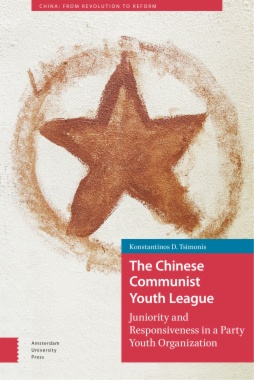The Chinese Communist Youth League is the largest youth political organization in the world, with over 80 million members. Former Chinese President Hu Jintao was a firm supporter of the League, and believed that it could play a bigger role in winning the hearts and minds of Chinese youth by actively engaging with their interests and demands. Accordingly, he provided the League with a new youth work mandate to increase its capacity for responsiveness under the slogan 'keep the Party assured and the youth satisfied'. This original investigation of the hitherto-unexamined organization uses a combination of interviews, surveys and ethnography to explore how the League implemented Hu's mandate at both local and national levels, exposing the contradictory nature of some of its campaigns. By doing so, it also sheds light on the reasons for Xi Jinping's turn against the League during his first term in office.
The Chinese Communist Youth League: Juniority and Responsiveness in a Party Youth Organization develops the original concept of 'juniority' to capture the complex ways that generational power is institutionalized, alienating young people from official political processes, with significant implications for China's political development. The book will be of interest to researchers and students of Chinese politics, as well as to scholars of comparative youth politics and sociology.
- Cover
- Table of Contents
- Acknowledgments
- 1. Introduction
- Scope and importance of the study
- The challenge: Reversing the legacy of an uneasy relationship
- Enter Hu Jintao: ‘Keep the Party Assured and the Youth Satisfied’
- Beyond dependency: ‘Youth’ as a junior political subject
- Researching the League
- Organization of the book
- 2. ‘Juniority’ and the generational subordination of party youth organizations
- Circumventing dependency: Cadre agency and responsiveness
- Youth leagues and generational politics
- Generational subordination and juniority
- 3. The League on Campus
- Joining the League
- Grassroots League committees and cadres
- League activities on campus
- The view from below: The League’s evaluation by students
- Conclusion
- 4. The League in the workplace
- Locating ‘youth’ and the League in the Chinese workplace
- Deregulated labor and League membership
- ‘Building the League through building the Party’
- The League’s activities: Between the Party committee and the management
- Serving and representing young employees
- Conclusion
- 5. Training youth cadres
- Organizational aspirations and realities
- The Central League School: Training generalist cadres
- The League School at the grassroots
- Improving training at the local level
- Personnel exchange and recognition programs
- Conclusion
- 6. In Search of Responsiveness
- Youth work norms
- Serving youth in practice
- Relations with social organizations
- Conclusion
- Conclusion: From Hu to Xi
- The League as a dependent and junior organization
- The League under Xi: Factional considerations or a new mission?
- Juniority beyond the League
- Appendix
- Bibliography
- Index
- List of Figures and Tables
- Figures
- Figure 3.1 Main motive for young people joining the Youth League (%)
- Figure 3.2 Is joining the party important to you? (%)
- Figure 3.3 How should CYL cadres be appointed? (%)
- Figure 7.1 The CYL under Xi
- Tables
- Table 2.1 Age limits for Communist Youth League cadres
- Table 3.1 Requirements for League awards
- Table 3.2 Does your league branch follow these procedures?
- Table 3.3 Have you participated in CYL events after entering university?
- Table 3.4 CYL activities that students participate in, prefer, consider useful
- Table 3.5 How useful are the following organizations in helping you with study-related issues and student-life-related issues?
- Table 3.6 If you require the assistance of an organization to deal with a problem, will you turn to the CYL?
- Table 3.7 CYL representation and responsiveness beyond the campus
- Table 3.8 Problems university students face and the CYL’s effectiveness in addressing them
- Table 3.9 CYL member’s views and suggestions
- Table 4.1 Characteristics of work units and companies analysed in this chapter
- Table 4.2 Annual transfer of members 2003-2007
- Table 4.3 League membership development 2003-2007
- Table 4.4 Example of annual plan of activities
- Table 4.5 Example of annual plan of activities
- Table 4.6 Frequency of political study meetings
- Table 4.7 Rights protection
- Table 5.1 CYL branches and cadres in numbers 2002-12 (in 000s)
- Table 5.2 The League School in numbers
- Table 5.3 Educational background of LS/CYUPS instructors
- Table 5.4 2006 and 2007 Sessions of the Central League School
- Table 5.5 Advanced Level League School Training Plan
- Table 5.6 Study subjects of 2004 Minority Youth Cadres Training Class (week long)
- Table 5.7 All-China Outstanding League Cadres Award Winners
- Table 5.8 Red Flag League Committee (Grassroots Branches) Award Winners
- Table 6.1 Content of CYL activities initiated at the national level, 1980-2007
- Table 6.2 Beijing City League committee activities, 2010
- Table 6.3 When looking for employment, where did you get help from?
- Table 6.4 During the past year, did you join a meeting of a participatory politics institution? (%)

